The Review Ė Initial impressions
Hi all,
Sorry for the lack of feedback to date but itís now been some months driving both the mostly-stock and the hopped-up version of the Neo Scorcher, plus Iíve tested some upgrades, so Iím well overdue for a bit of an update.
Again bear in mind that I havenít driven all that many buggies before so iím pretty limited in what I can compare it to.
Handling & steering
I had a 2WD buggy just prior to these - a brushed Haiboxing (HBX) Quakewave (which I think was a very good copy of some of the higher end 2WD buggies) which had the motor mounted over / behind the rear wheels / axle and had a slipper clutch. I was very happy with it but sold it as at the time I didnít really have a place to drive it.
Compared to that the TT-02B Neo Scorcher has very different balance and handling.
The balance I find is much more neutral, I think due to the motor/weight being mounted within the wheels / chassis, not hanging over the back wheels. The Neo Scorcher drives very flat through corners with very little body roll, and when jumping (small jumps) invariably stays quite flat in the air (regardless of throttle) whereas I found the Quakewave to be pretty all over the place wanting to flip out when jumping.
In terms of steering, with a bit of toe-out the Quakewave loved to drift around corners with minimal power whereas the 4WD of the Neo Scorcher continues to pull the front through the corners, and will only step the rear out under hard power / very loose surfaces.
I was however driving on different surfaces with different tyres so take the above with a grain of salt.
When jumping and one of the front wheels lands first it will noticeably pull from that wheel making it very easy to control.
Personally I would recommend a 4WD buggy to anyone just getting started Ė easier to control than a rear wheel drive.
Cornering in the stock version is ok Ė It can take about as much steering angle as the servo can turn (note iím running standard Tamiya 2.4ghz Finespec on the stock version so canít adjust EPA) but is somewhat limited due to the large dogbones and chunky knuckles.
The stock plastic parts and steering arms give it a little toe-out at the front and noticable toe-in at the rear.
I have moved to the upgraded low-friction screws (Tamiya part no 54550) for the steering posts on the mostly stock buggy, as I hoped they would improve the steering response plus they have the tighter screw thread Ė I found the stock tapping screws started to come loose. Pic shows one of each type in place.
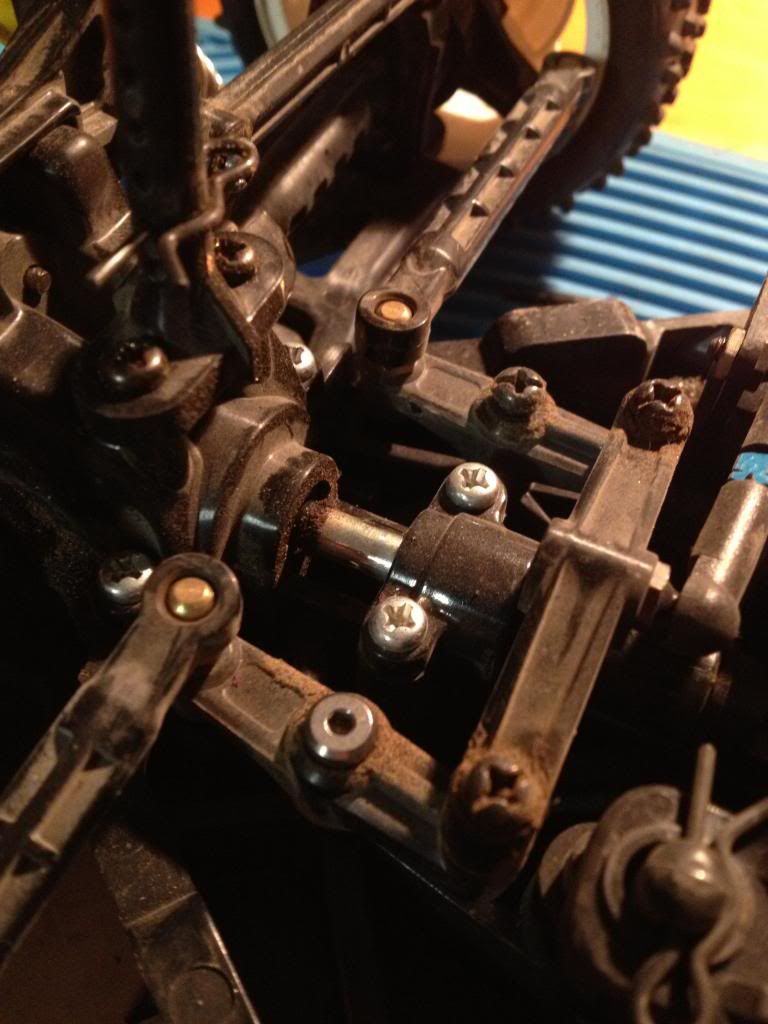
With the front end / steering upgrades on the hopped up version I can achieve a lot more steering angle both due to the reduced bulk (dogbones, knuckles) and EPA adjustments, but at the risk of introducing some chatter into the front end.
The steering improvement is noticeable, particularly given the front one-way upgrade, with much tighter turns.
However the Eagle front one way was the first thing to go on the hopped up version, or more correctly the bevel gear which stripped teeth (using a 15T brushed motor). Note that this was the bevel gear supplied with the Eagle one way, not the kit-supplied bevel gear.
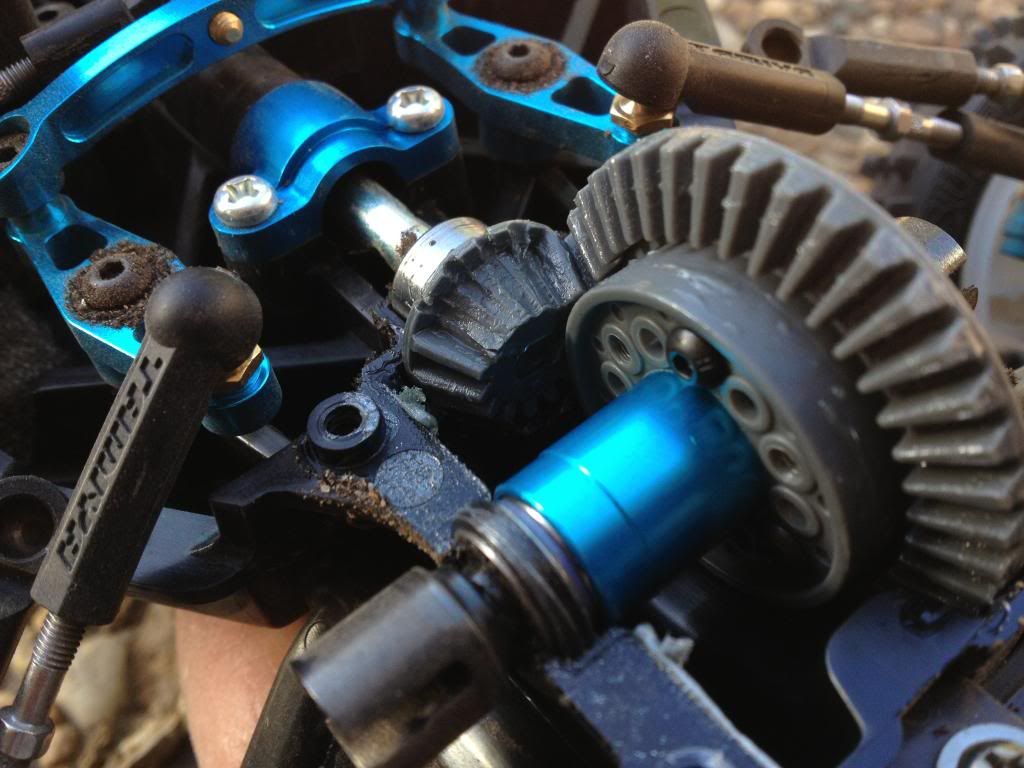
I ended up going back to a regular open diff packed with anti-wear grease to help reduce its differential movement.
At this point I should note (given itís the subject of much discussion) that although I hear the gears skip frequently, I have not noticed any wear on the Ďplasticí gears Ė Either the outer or internal diff gears. I know a lot of people were worried they would given they are plastic not metal. Iím pretty sure you could get metal ones from one of the DF or DT models although they are getting harder to find as they get older.
Note though that Iím not running powerful brushless motors and some of my rear diffs are locked.
Speed / Motor
In terms of speed the stock Tamiya Torque Tuned 540 motor / 17T pinion is quite nippy for initial acceleration but lacks top-end speed. Not that the top end speed is slow, but neither is it fast.
I think this is fine for acceleration / a basher / kids buggy Ď driving round the front yard as more top end speed just equals bigger crashes and more repairs!
Also given the type of driving you do with buggies, initial acceleration is what you need most of the time.
Itís enough power to spin the wheels (well Ďwheelí more often than not given the open diff) moderately on loose surfaces.
The 15 turn brushed HPI Firebolt 540 motor upgrade (still with the 17T pinion gear) gave a nice boost of all-round power. Nothing staggering, maybe a 15-20% increase over the stock setup and I donít think youíd need anything faster for a street basher.
However on a 1/10 off-road track it feels slow, especially down the main straight, and will not clear a double jump (tyres may come into it too).
I think I may have hurt the motor running it continually at full power on this gearing. A few cooling fins snapped off through the exposed holes in the motor too.
I tried a bigger 19T pinion (Tamiya part number 50355) and it made a world of difference and I highly recommend that if you go up in power the go up in pinion size.
The manual recommends no higher than 19T with the kit included 70T spur, however some sedan versions come with a 22T pinion on the same spur and the manual says you can go up to 25T soÖ? Someone else will have to weigh in on that.
Note the supplied 17T pinion is steel I think whereas the 19T on there now is alloy. Does anyone know where you can get metal pinions that match Tamiya pitch?
Shocks
This is probably the area Iím most frustrated by Ė The ride height for the Neo Scorcher is quite low which is fine for just bashing around and it handles well, but take any sort of jump and it will bottom out hard all the time.
I donít understand why you would give a buggy such long shocks when there is so little ground clearance Ė It bottoms out well before the shocks reach their full travel.
Itís also difficult to increase the ride height with the stock shock mounting positions.
I tried putting some very fancy Eagle piggyback shocks on but ended up going back to the stock ones as they added weight and were difficult for a n00b like me to tune.
Note that many Tamiya buggies use the same shocks Ė DT-03, DT-02, DF-02 Ė so you can use shock parts from many other buggies to tune.
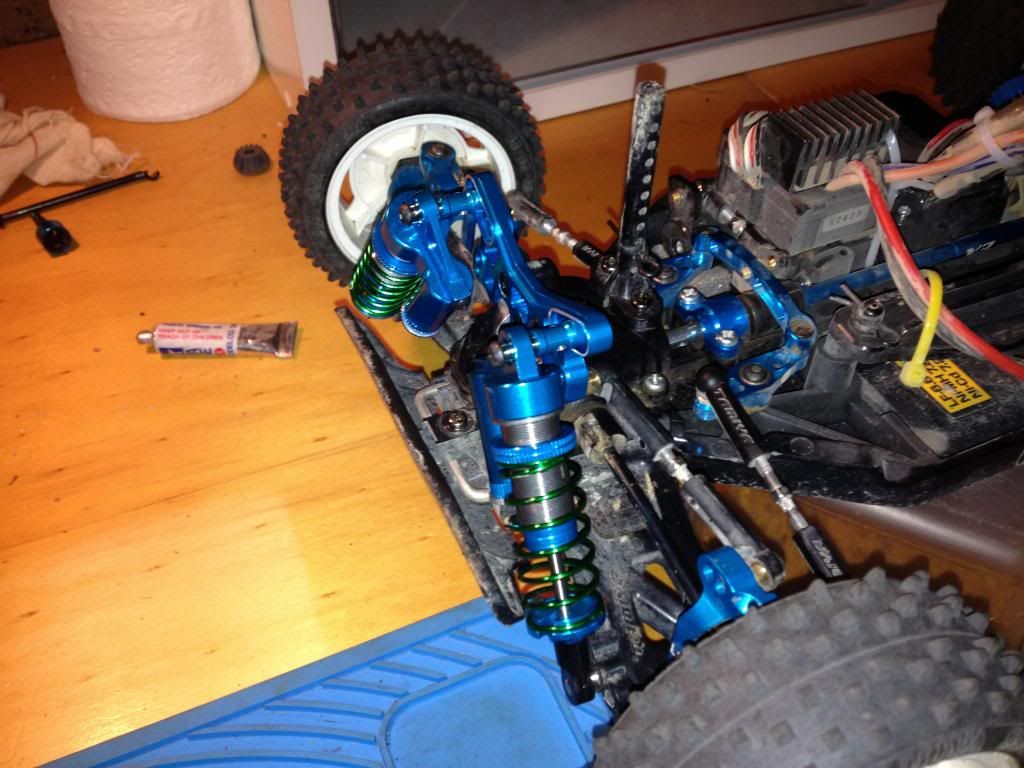
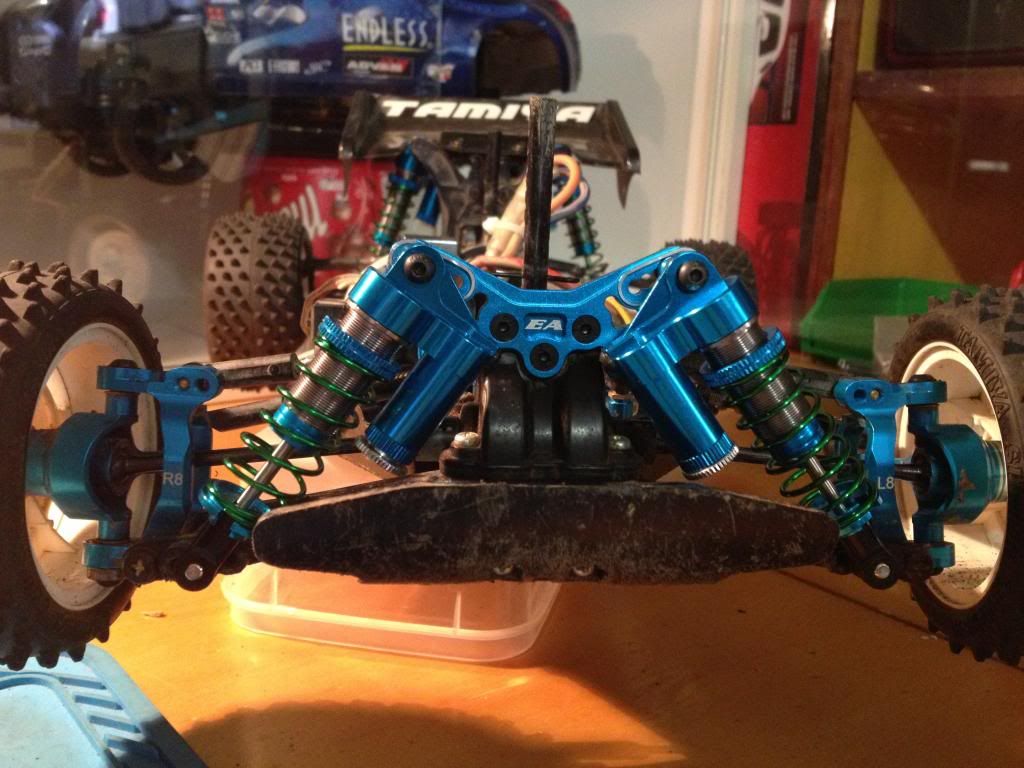
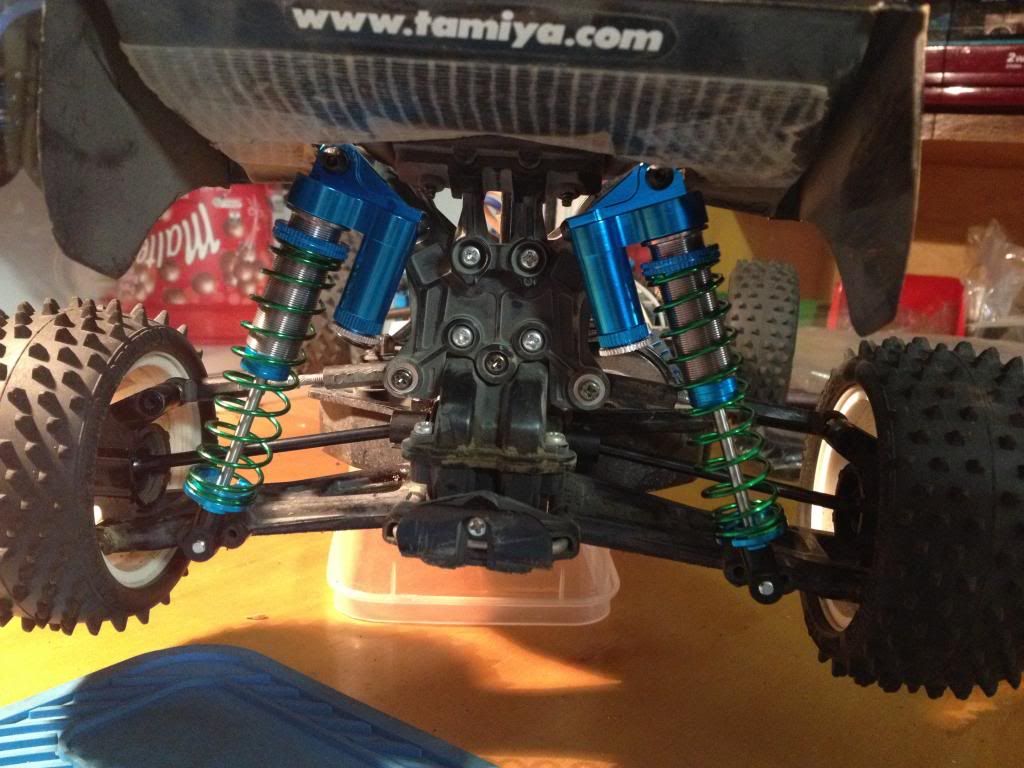
At present Iím fiddling around with oil weights, pre-load clips and springs but any advice in this area would be appreciated.
Iíve also experienced some discolouration of the stock shock fluid too Ė Iím not sure if it was rust or something???
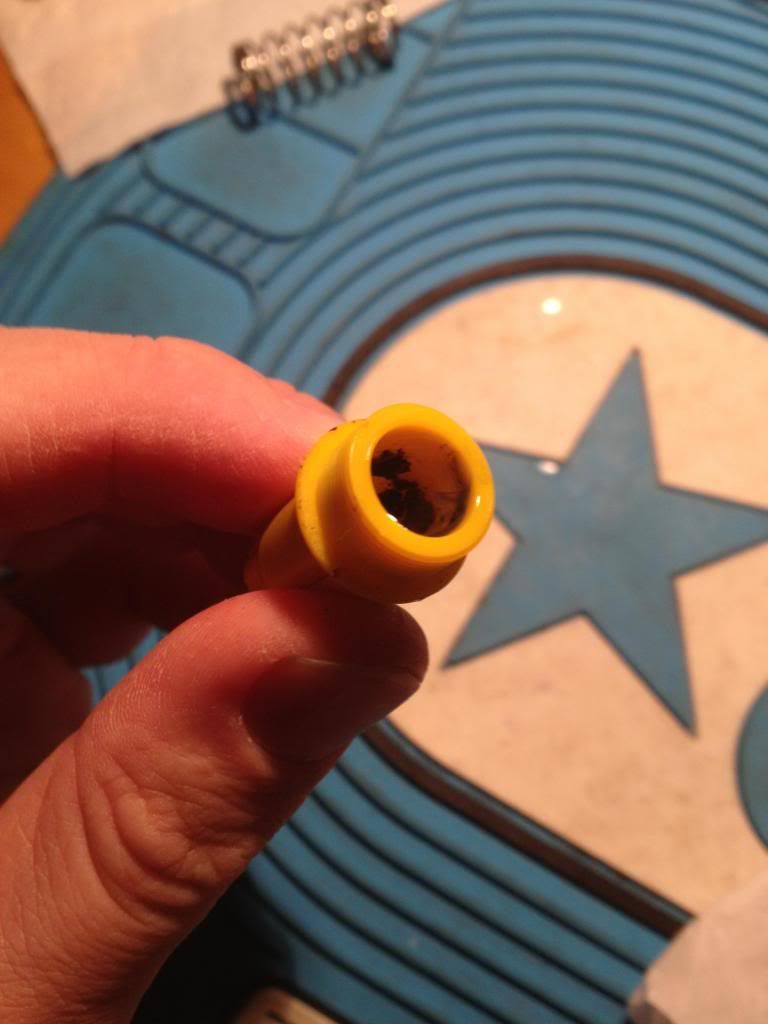
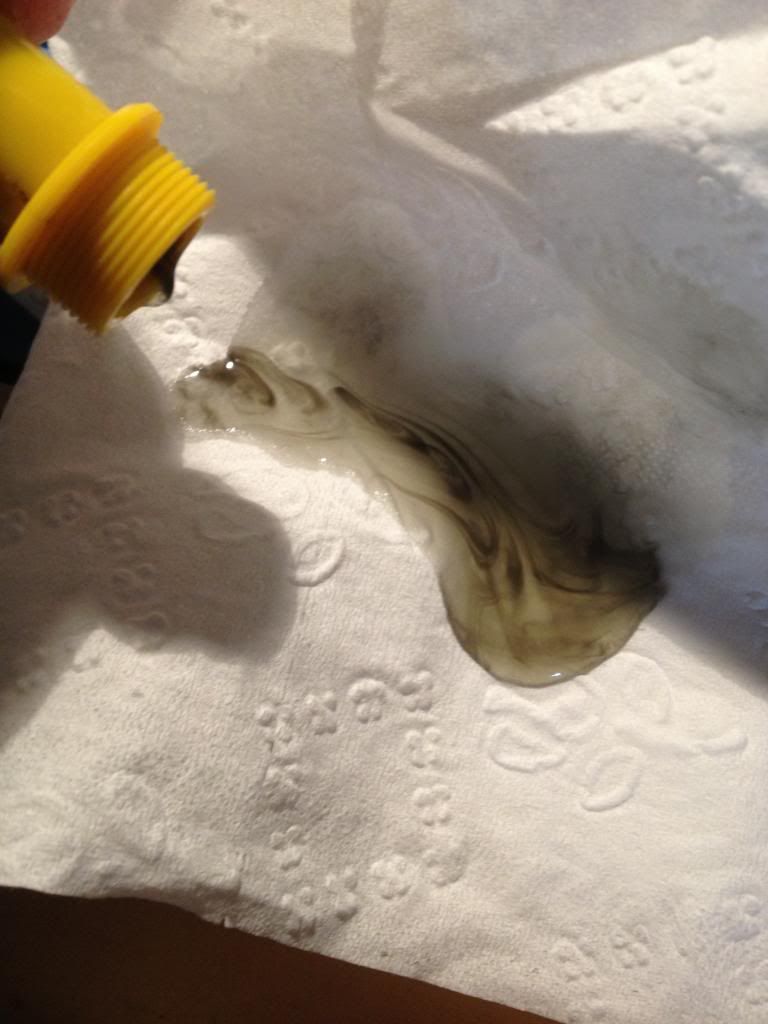 Tyres
Tyres
The supplied tyres are very good for bashing through a variety of loose surfaces. I think their only weak point is on hard packed clay / dirt surfaces like those found at off-road tracks where I donít think they give you enough grip. There are Tamiya upgrades which I plan to try soon.
Also note if you run the stock tyres on regular road tarmac they will wear down quite quickly.
Breakages
On the mostly stock version Iíve had one of the step screws that holds the shock absorber get torn out, I think by a large rock (almost lost a dogbone too). Ball joints or the tighter non-tapping screws may be the way to go.
One of the screw-points for the motor / spur cover also cracked (see centre of pic) although I may have over-tightened it.
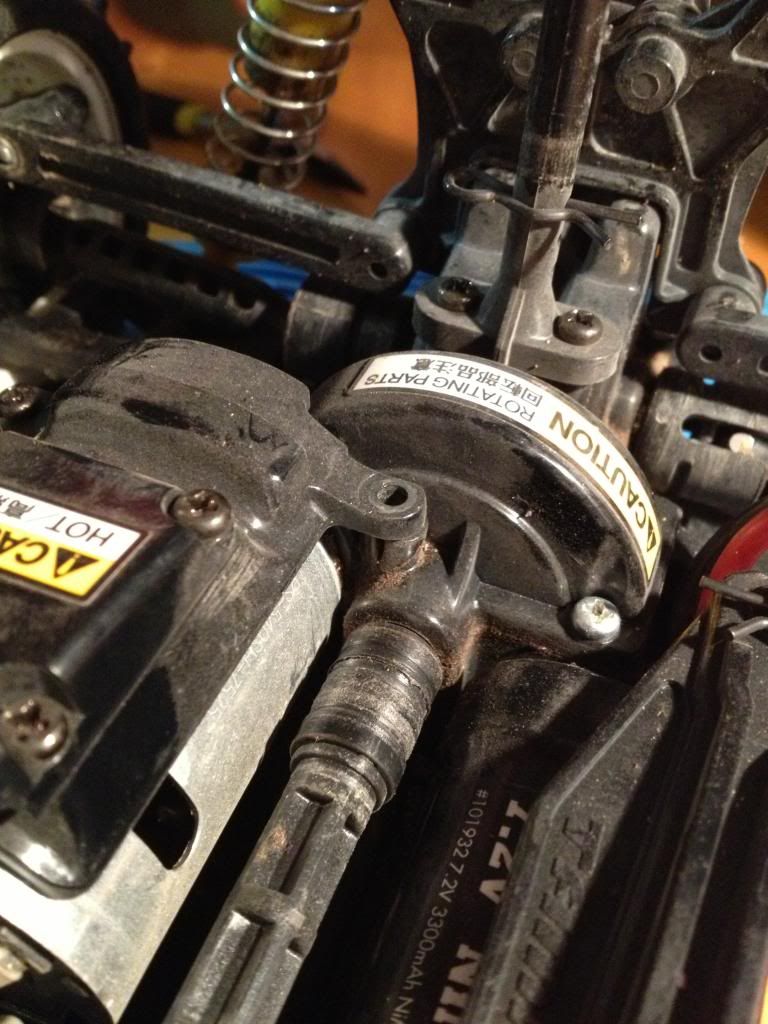
I also recently hit a fence and broke one of the low-friction steering post screws, leaving the bottom half embedded in the tub which will likely mean a new tub - cheap enough but time-consuming having to transfer everything over.
I have heard of others have experienced this problem and I note that the underside looks like it has spots for nuts so perhaps something to try thereÖ
PIC TO COME
On the hopped up version iíve snapped a front Eagle uni on a particularly bad cartwheel.
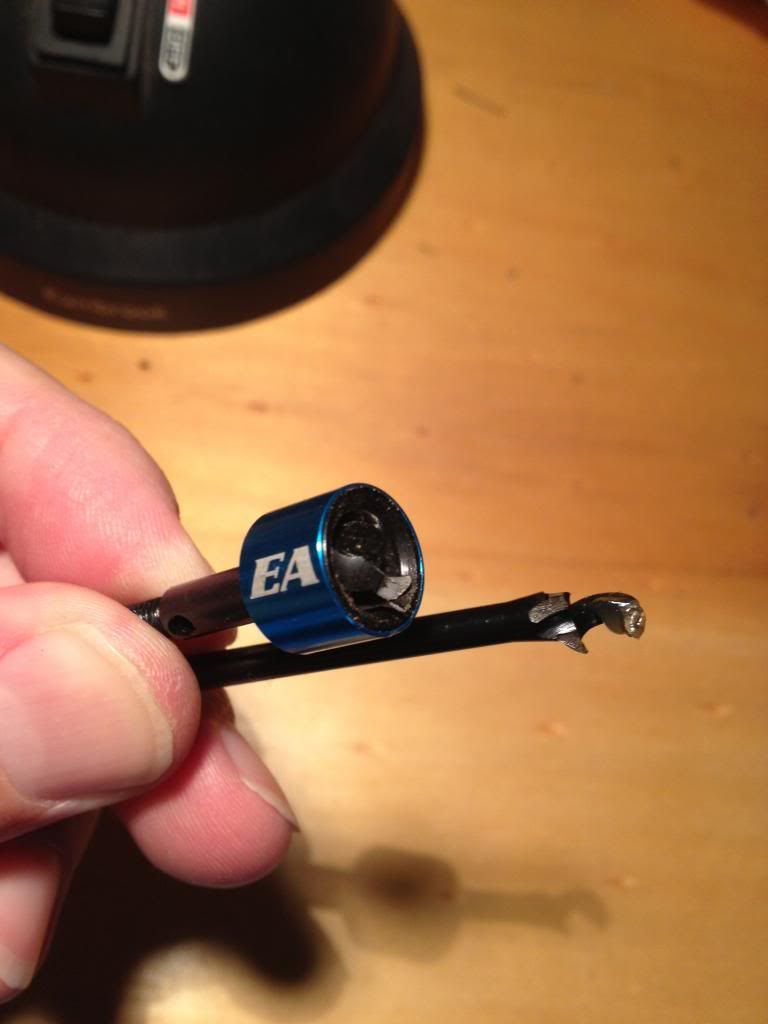
I also hit the screws out of the front upper suspension holder (using an upgraded alloy piece, replacing the stock A5 piece) but it did go head first into the back of a 1:1 car tyre which focussed all of the impact at that point.
On a 1/10 track I nose-dived it a hundred times trying to clear a double and it didnít quit on me once so pretty happy with the toughness Ė Perhaps just use longer screws than stock.
Big shout out to Banzai Hobby who especially got into stock the Tamiya part to repair this. Their service is really top notch even for small-timers needing a hard to find part.
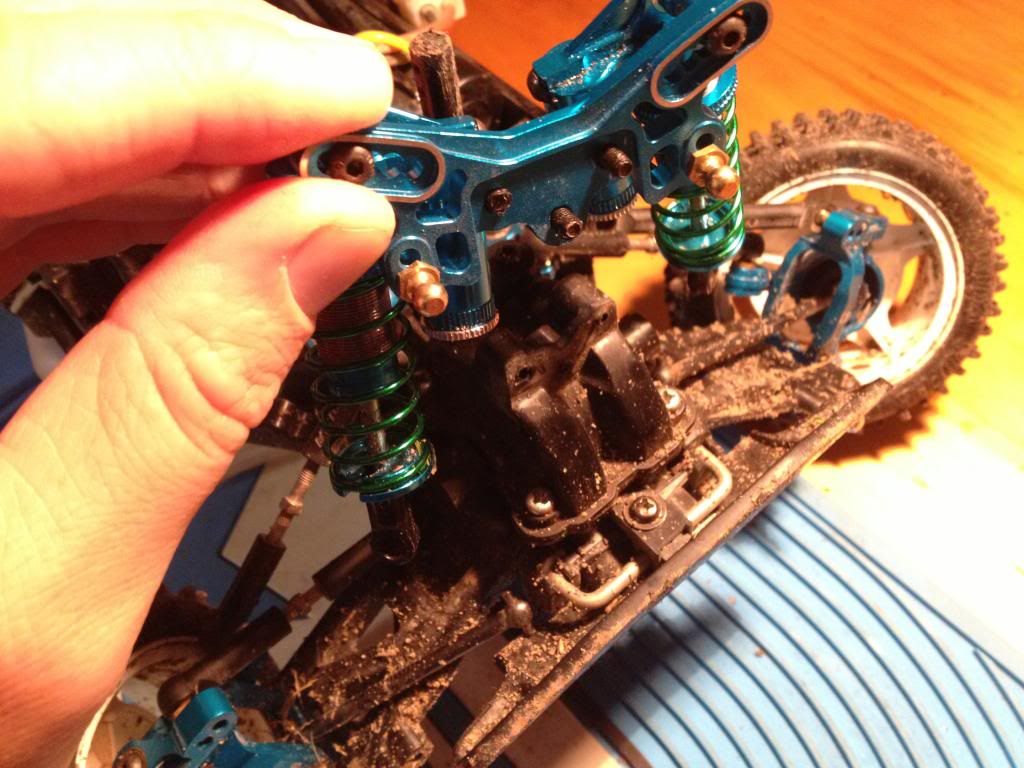
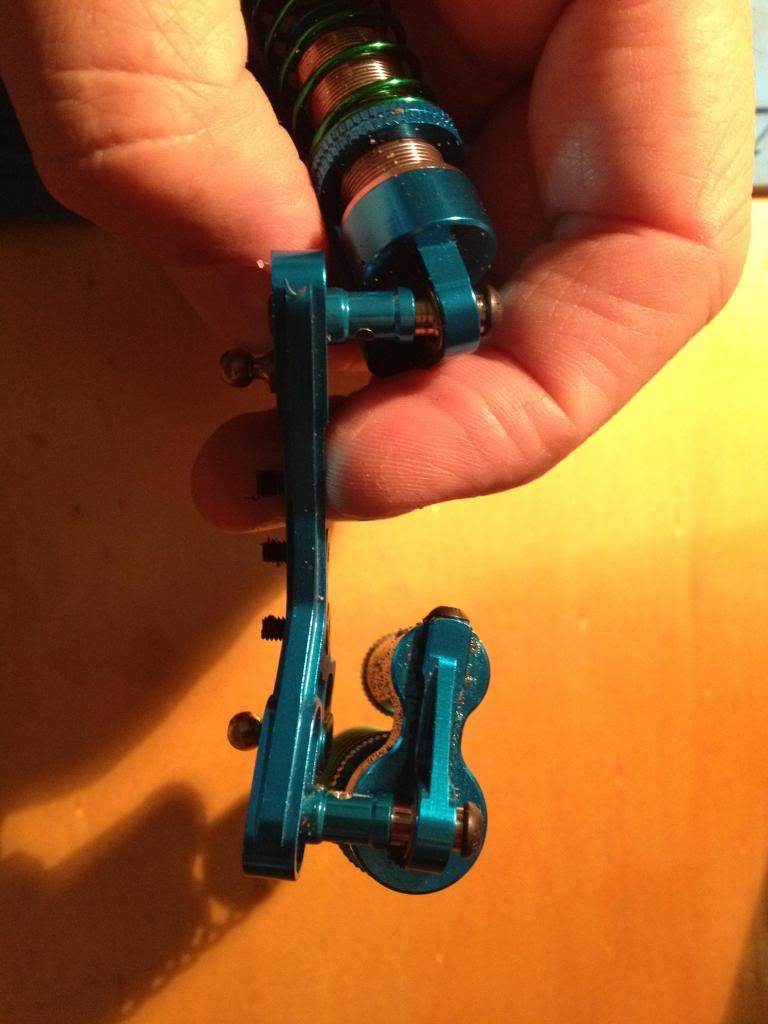
Iíve also broken one of the Eagle front C cups Ė Not sure if a screw came loose or something.
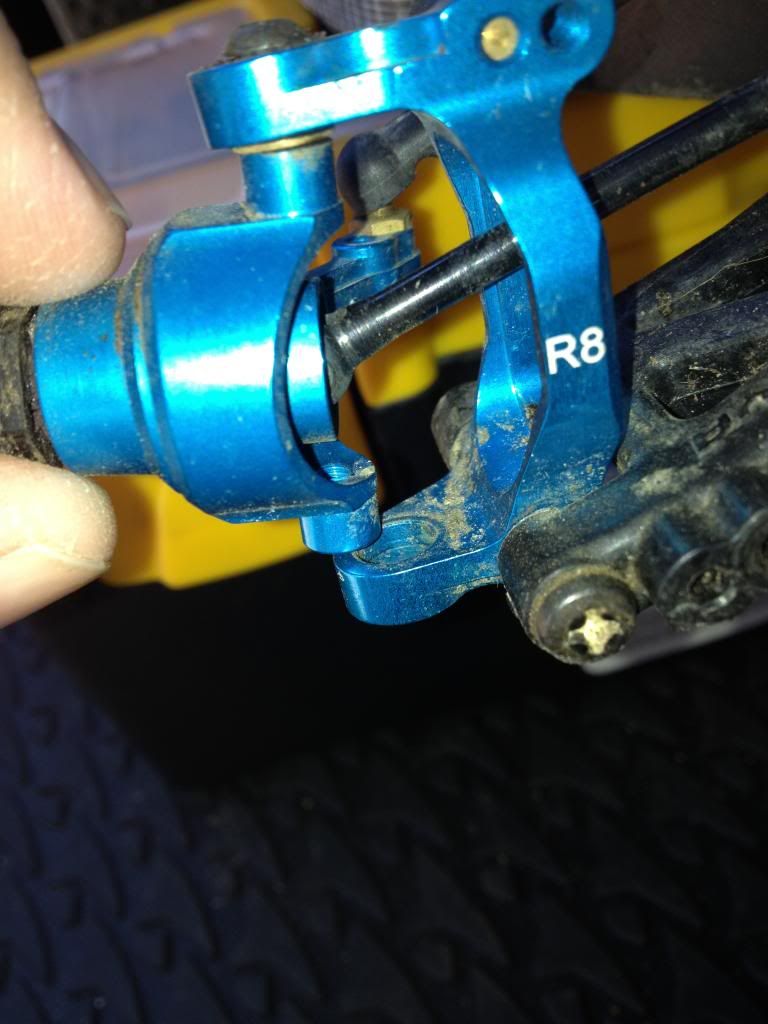
All up though the buggies have been put through a lot, both by me and the kids, and have stood up fairly well. The main problems Iíve had have been with the upgraded pieces so I have no problem in recommending the Neo Scorcher as a great basher car.
As for something competitive? Well Iím not sure about that yet...
Summary
Likes: Easy build, capable basher, good handling, lots of cheap upgrades, easy to source spares, spares are cheap, shared upgrades with sedan TT-02 models, durable
Dislikes: Bottoms out on landing after almost every single jump, turning circle is large, tapping screws get loose easily (buy 20 3x10mm titanium screws 53530 if you plan to pull it apart regularly)
Iíll keep updating when I can but please feel free to comment and make suggestions!
Cheers,
Crouch